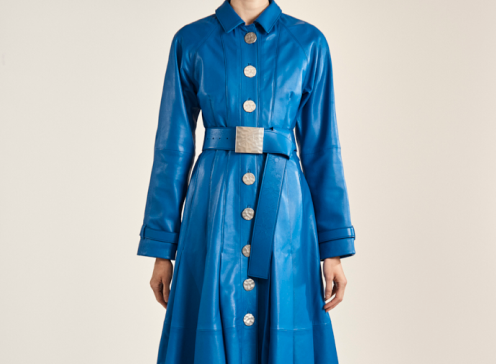We have more than 75 patented molecular configurations for how Activated Silk™ can be put to use. Here’s a look at one: a moisture-wicking textile treatment.
What problem are we solving? We’re improving the comfort of clothing made from nylon and nylon blends by helping it better wick moisture from the wearer. Moisture wicking is the action of drawing a liquid, such as water or perspiration, to the outer surface of a textile so it can evaporate. The degree of moisture wicking is dependent on both the hydrophobicity of the fibers (how much water they absorb) as well as the porosity of the fabric (creating ‘interfiber capillaries’ to transport the moisture). Manufacturers thus develop different yarns and fabric constructions to modulate wicking capabilities. A wicking agent can then be applied during the textile finishing process to further boost the ability of the liquid to make its way through the “capillaries” of the fabric.
How we solve it: To effectively wick
moisture, a textile needs to simultaneously attract and repel water. If it only
repels water, liquid will never make it to the surface to evaporate; if it only
attracts water, it will hold onto liquid. By using specific molecular
compositions from our Activated Silk technology and applying these to nylon or
nylon blends, we can turn the fabric into a sweat-wicking
material using a balance of hydrophobic and hydrophilic qualities that
keep the wearer comfortable and dry.
How conventional textile finishers are different: Thermoplastic treatments are commonly used in textile finishing as a moisture-wicking treatment. In addition to their environmental impact, most plastic products, including thermoplastics, can release endocrine-disrupting chemicals.
How silk holds up against the competition in moisture wicking: We have an edge over our synthetic counterparts as proved through industry-standard testing.* Nylon-blend fabrics finished with Activated Silk have demonstrated wicking on par and up to 10 percent better after multiple washings than the same fabric treated with conventional chemicals. Additionally, Activated Silk-finished nylon blends dried up to 35 percent faster than nylon blends finished with conventional chemicals.
How is Activated Silk for nylon wicking integrated into the manufacturing process? The manufacturing process is the same; it’s simply a matter of swapping out conventional finishing agents for our safe, natural liquid silk formulation.
The result: Nylon clothing that keeps wearers dry and comfortable, that is fully biocompatible with the human body, and that helps maintain harmony with the planet.
*Test methods: AATCC 197-202, AATCC 201-1013, performed on a 75 percent nylon-25 percent Lycra blend.
